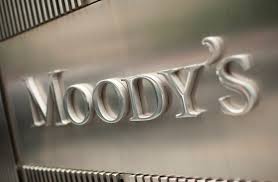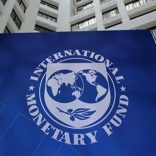IMF lowers projections for Mozambique. Angola, Sao Tome; upgrades Cabo Verde, Guinea-Bissau, ...
Mozambique proposal on debt is negative for credit rating – Moody’s

File photo
The financial rating agency Moody’s said yesterday that the proposal Mozambique presented to investors for the renegotiation of the public debt was negative from the point of view of the quality of the country’s sovereign credit.
In a research note sent to investors that the Lusa had access to, Moody’s analysts say that, although there are as yet no details on the Government’s talks with private creditors on the renegotiation of the public debt securities and the loans of public companies Mozambique Assett Management (MAM) and Proindicus, both guaranteed by the state, “the proposed private sector debt restructuring is negative from a credit point of view”.
Moody’s explains that Mozambique is considering restructuring the MAM and Proindicus loans as well as the debt instrument issued in March converting the Mozambican Tuna Company (Ematum) bonds.
The country’s obligations to creditors are 17 percent of the external debt in nominal terms, and represent about 30 percent of current values, so “restructuring only the private sector debt will bring only limited relief to Mozambique”.
While considering that this is “unlikely at this time”, Moody’s believes that the debt would be “significantly alleviated if the restructuring is also extended to bilateral loans”, which are worth 42 percent of the external debt in nominal terms.
In the next five years, Mozambique has to pay instalments to the private sector amounting to US$1.7 billion, and in August the country had only US$2 billion in foreign currency reserves.
In the wake of revelation in April of undisclosed state-guaranteed loans worth a billion dollars taken out by MAM and Proindicus, Moody’s downgraded Mozambique’s sovereign debt rating to Caa3, further lowering the country into non-investment, or `junk` territory.
“Although it is not clear how the restructuring of these obligations will be proposed, a relatively favourable scenario for creditors would be one in which the MAM and Proindicus loans that amortise from 2016 had the maturities extended and lower coupons and holders of ‘eurobonds` received less interest but kept the same maturity (2023),” Moody’s says.
A more negative result for investors, continues Moody’s, would be a “‘haircut’ of MAM and Proindicus loans payments to improve debt sustainability and increase the likelihood of resuming the IMF financing program.”
The same approach “could well be followed in the case of debt securities”, in which case losses could exceed 35 percent, in line with the “Caa3 rating with Negative Evolution Perspective” that Moody’s imposed in the first half.
In October, the Bank of Mozambique revised the economic growth forecast to 3.5 percent and inflation to at least 29 percent this year, warning of “critical levels” of liquid reserves, covering only three months imports.
According to the Mozambican central bank governor, inflation stood at 25 percent in September, without taking into account the effect of the fuel price increases, and will demonstrate a “growing trend” in a range between 29 percent and 34 percent by the end of the year.
Last Wednesday, the Government of Mozambique officially acknowledged its inability to pay upcoming installments of the so-called “hidden loans”, advocating the restructuring payments and a new financial aid package from the IMF.
“The profile of public debt and guaranteed by the State of Mozambique is not sustainable,” a Ministry of Finance in a presentation to investors that Lusa has access to states.
Over the course of 20 pages, the document acknowledges the inability to pay the debts of enterprises with hidden loans, assumes that the public debt will reach 130 percent of GDP this year, and revises economic growth forecast downwards to 3.7 percent, bluntly stating that debt metrics are unsustainable.













Leave a Reply
Be the First to Comment!
You must be logged in to post a comment.
You must be logged in to post a comment.